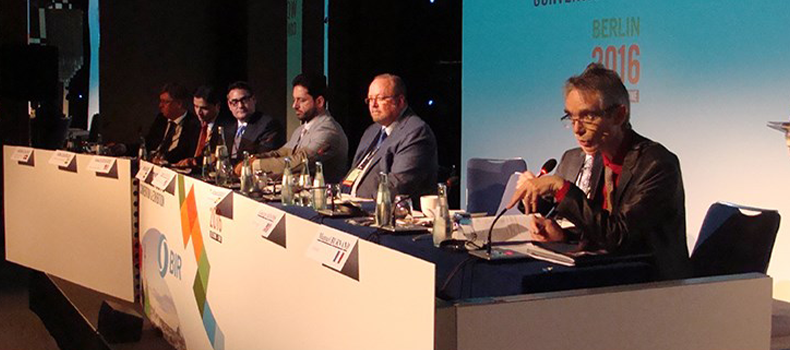Welcome to Newell Recycling Equipment since 1960
Don’t Forget to follow us on Facebook and other social media.
Welcome to Newell Recycling Equipment since 1960
Don’t Forget to follow us on Facebook and other social media.

June 13, 2016
BIR Convention: Air bags, designed for safety, are a hazard at shredding plants
Non-deployed air bags are a potential explosive hazard at auto shredding plants.
June 9, 2016 Brian Taylor
Auto Shredding Conferences & Events Ferrous International Recycling News Nonferrous
Shredder Committee presenters at the 2016 Bureau of International Recycling (BIR) World Recycling Convention, held in Berlin in late May, gave an overview of new technologies; provided an update on the status of a European effort to establish best practices; and gave a warning of the hazards of air bags in the feedstock stream.
George Adams Jr. of United States-based SA Recycling said his firm suffered an injury-causing explosion of an air bag on a picking line in early 2013. Adams said pickers at an Arizona shredding plant “saw sizzling and sparks on the belt, and before they could do anything, it [an automobile air bag] exploded.”
Adams said the widespread use of air bags, while it has been good for driver and passenger safety, has presented “a dangerous situation,” and that some newer car models “have as many as 30 air bags in them.” He added, “It is becoming a bigger issue because cars have more and more air bags.”
The California-based recycler showed a photo of two cylinder-shaped air bag units commonly used in German makes and models. “They look kind of like a pipe bomb,” said Adams, noting that employee witness statements used that same comparison.
“All of us have to be careful”, Adams said of shredder operators in the United States, where he said there is no national requirement for dismantlers or car owners to remove air bags before end-of-life vehicles are taken to shredding plants. While an air bag explosion in the shredding chamber can be loud and disruptive, the danger is particularly acute on picking lines if air bags make it through the shredding chamber without deploying.
Adams showed a photograph of how his pickers must now be outfitted, with a face shield and bulky puncture-resistant vest, after in the Arizona incident a worker suffered two broken ribs and a punctured lung from shrapnel sent flying by the exploding airbag.
Shredder Committee Chair Manuel Burnand of Paris-based FEDEREC provided an update on the shredder plant portion of the BREF document, designed to create best practices to help shredder operators meet dust and water emissions control requirements in the European Union.
He said FEDEREC had helped collect information from a larger number of shredder operators in Europe, helping to provide a more realistic portrayal of current operations and benchmarks.
Scott Newell III of United States-based Newell Recycling Equipment said auto shredders and downstream systems have continued to automate and to provide more thorough separation of materials.
He said shredder monitoring systems have helped plant operators know exactly what they are doing right and also where problems need to be addressed, particularly in terms of feeding material into the shredding chamber.
In terms of downstream sorting, Newell said the Metal Loss Monitor from United States-based Eriezaccurately assesses the amount of metal in auto shredder residue (ASR) that is about to be disposed of. “This allows the operator to be alerted that there is some type of [improper] condition,” said Newell. “The savings for quick fixes is significant,” he added. “If an adjustment can be made that rectifies a problem within minutes rather than hours or even days, the benefits are great.”
The 2016 BIR World Recycling Convention was May 29-June 1 at the InterContinental Hotel in Berlin.